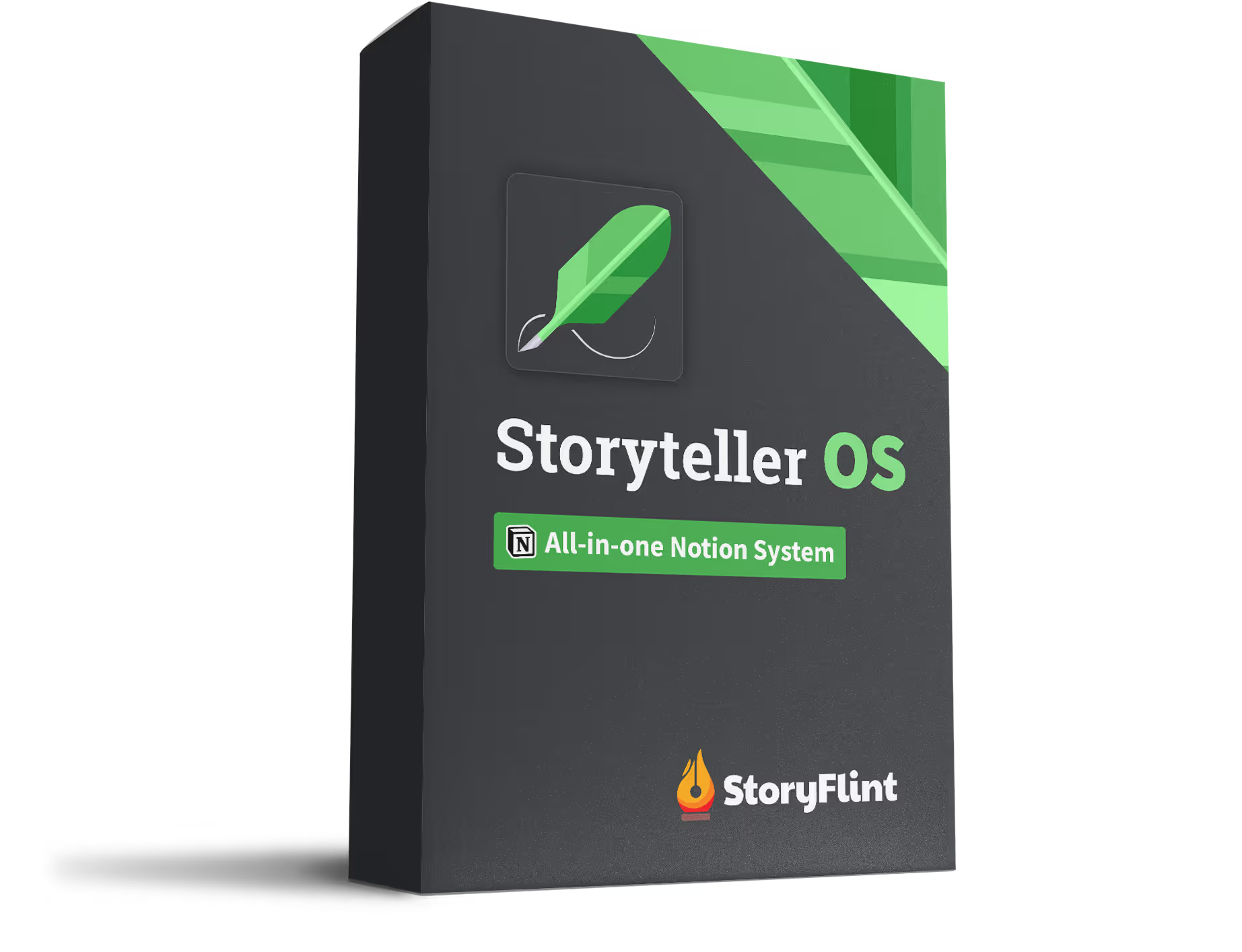Suspense is that delicious ache your audience feels when they need to know what happens next but you won’t let them—yet. It’s the pause before the jump scare, the moment before the door creaks open, the dread of an email subject line that just says “We need to talk.”
Definition: In storytelling, suspense is the tension created by delaying information, outcomes, or consequences. It thrives on uncertainty, anticipation, and the promise of payoff. Without suspense, even the most explosive plot twist can feel flat.
TL;DR — Building Suspense:
- Define what’s at stake early and make readers care.
- Delay answers, outcomes, or information to stretch tension.
- Use foreshadowing, irony, and cliffhangers to create questions.
- Layer in uncertainty: What could go wrong? Who can’t be trusted?
- Pay it off—suspense without resolution is just frustration.
The importance of suspense in a story
Suspense is key in storytelling, and here’s why it’s so important: it keeps readers hooked and fully invested in the tale. Let’s dive into a few reasons why adding a touch of suspense is a game-changer for any narrative:
- Engagement: Suspense hooks the audience, making them eager to find out what happens next. It keeps them turning pages or watching scenes with anticipation.
- Emotional Investment: By creating uncertainty and tension, suspense encourages readers to emotionally invest in the characters and their outcomes, heightening the overall impact of the story.
- Pacing: Suspense helps control the pacing of a story, allowing for a balance between fast-paced action and slower, more introspective moments, maintaining reader interest throughout.
- Depth and Complexity: It adds layers to the narrative, often intertwining with mystery and dramatic irony, which enriches the story and provides a more immersive experience.
- Memorable Moments: Suspenseful scenes are often the most memorable, leaving a lasting impression on the audience and making the story more impactful.
Essential elements of suspense
To whip up a page-turner, focus on these must-have elements:
- Time: Toss in a ticking clock to crank up the urgency and pressure. Who doesn’t love a little race against time?
- Stakes: Make sure to spell out what’s on the line for your characters. The clearer the stakes, the more invested your audience will be.
- Uncertainty: Keep your audience guessing! Withholding information or throwing in some unpredictability can work wonders.

11 techniques for building suspense
Here are some tried-and-true methods to amp up the suspense in your story:
1. Foreshadowing
Drop hints about future events to build anticipation. An innocent detail can turn into a game-changing plot twist, leaving readers hungry for more.
2. Cliffhangers
Wrap up chapters with unresolved dilemmas or burning questions to nudge readers to keep turning the pages. Just don’t overdo it, or it'll lose its charm!
3. Flashbacks and Flash-forwards
Flashbacks and flash-forwards can be your best friends! Reveal vital backstory or tease future events to add layers of intrigue and depth to your plot.
4. Character Jeopardy
Put your characters in tense situations. When readers care about your characters’ fates, suspense skyrockets!
5. Dramatic Irony
Let readers in on secrets that characters don’t know. This creates delicious tension as everyone wonders how it will all unfold.
6. Mysterious Settings
Craft atmospheric settings that ooze unease or mystery. Think locations that whisper secrets or hint at danger—perfect for stirring up suspense.
7. Unanswered Questions
Sprinkle questions throughout your story and hold off on answering them. Keeping readers curious about the answers keeps them engaged!
8. Parallel Plot Lines
When you’ve got subplots for villains and secondary characters, you create more places for suspense and raise questions in the reader’s mind about how the various stories might be related.
9. Internal Monologue
Anything your protagonist worries about will worry the reader. Their thoughts and feelings can create apprehension and set a mood of anticipation.
10. Puzzles
Sometimes, a quest is all about cracking a riddle and following a trail of clues. It could be a series of symbolic hints or even a classic whodunit that keeps you guessing. No matter what, the thrill of the chase makes it a fun adventure for everyone involved!
11. Unseen characters
These shadowy power brokers are usually villains, but they can surprise you by being heroes, too. Let the audience learn about them through other characters’ fear of them.
7 tips for writing suspense
- Suspense and terror go hand in hand; think of suspense as the nagging worry about a not-so-great outcome, while terror is the full-blown fear that it might just happen.
- Want to add some thrill to your suspenseful scenes? Throw in extra dangers or obstacles—it's like a rollercoaster ride for your characters!
- A sneaky way to build suspense is to stash the solution to your story's problem in the absolute worst spot for your characters. Talk about a plot twist!
- Let’s clarify: tension is that general buzz of anticipation, while suspense zooms in on the nail-biting moment between two clearly opposing outcomes.
- The shift from tension to suspense happens when you unveil that “ticking bomb” moment—cue the dramatic music!
- The level of suspense is directly tied to how invested we are in what's happening. The more we care, the more we sweat!
- Suspense needs a payoff—good or bad—to bring a sense of closure. It’s like a sigh of relief that lets the audience reset and gear up for whatever comes next!
Examples of good suspense building in media
Let’s look at some fantastic examples from literature and film that really nail suspense.
Literature
- To Kill a Mockingbird by Harper Lee: Juggles multiple narrative threads to keep readers hooked.
- Truly Madly Guilty by Liane Moriarty: Balances short-term suspense and cliffhangers beautifully.
- Jane Eyre by Charlotte Brontë: Keeps readers guessing with hidden truths that create a sense of mystery.
- Misery by Stephen King: Dialing up the horror for an emotional punch.
Film
- Inglourious Basterds: Skillfully uses dialogue and character interactions to build tension.
- Jurassic Park: Crafts suspense by showcasing the battle between control and nature's unpredictability.
- The Thing: Masterful editing and pacing maintain viewer uncertainty.
- Drive: Minimal ambient sound creates a nail-biting atmosphere.
Courses on suspense writing
FAQs
What is suspense in writing?
Suspense is the art of keeping readers hooked by holding back outcomes or information. It’s not just action or mystery—it’s the tension of waiting.
Why is suspense important?
Because without suspense, your story flatlines. Readers need anticipation and uncertainty to stay engaged. Suspense makes them turn the page when they should really be going to bed.
How do I write suspenseful dialogue?
Keep it indirect. Characters dodge questions, hint at secrets, or reveal less than they know. Think “unfinished sentences” and “loaded pauses” instead of long monologues.
What’s the difference between suspense and tension?
Tension is the immediate strain in a scene (like two people arguing at a dinner table). Suspense is the long game—the unease that builds because you don’t know what’s coming.
When should I use cliffhangers?
Sparingly. A cliffhanger is like hot sauce: too much and readers roll their eyes; just enough and they’ll beg for more.
Conclusion
Remember, suspense is a powerful tool in storytelling, whether you’re penning a novel, screenplay, or short story. By mastering these techniques, you’ll not only captivate your audience but also make them eager for your next tale.





